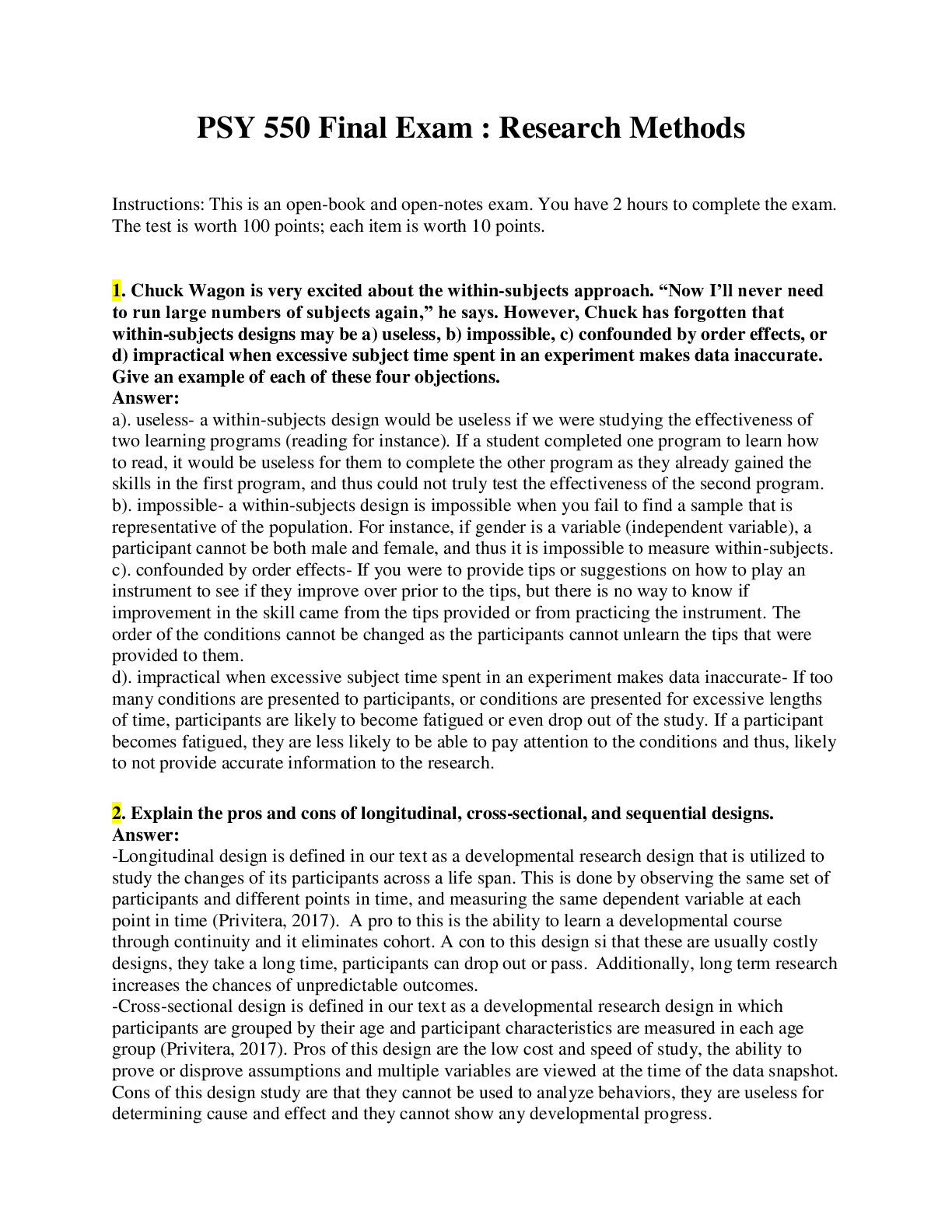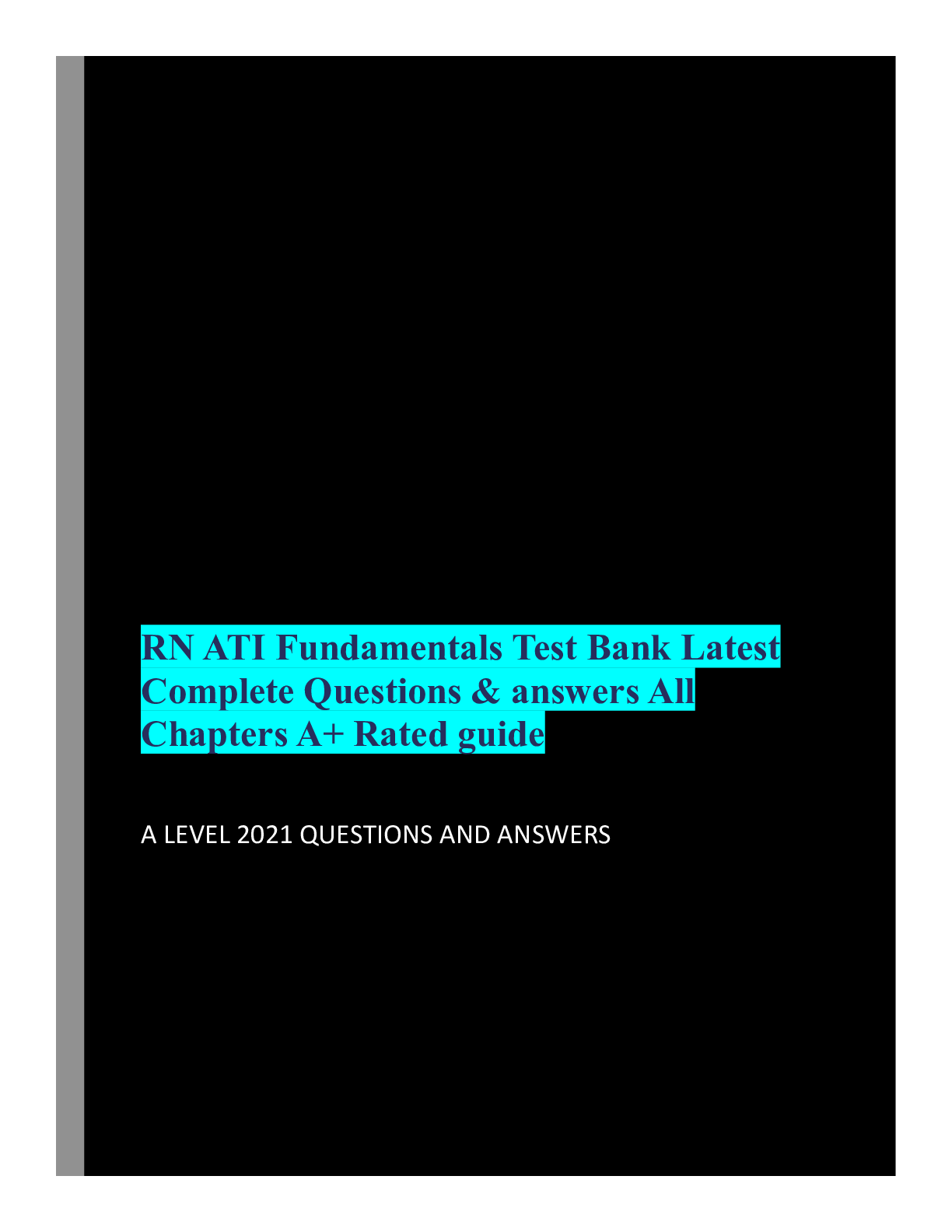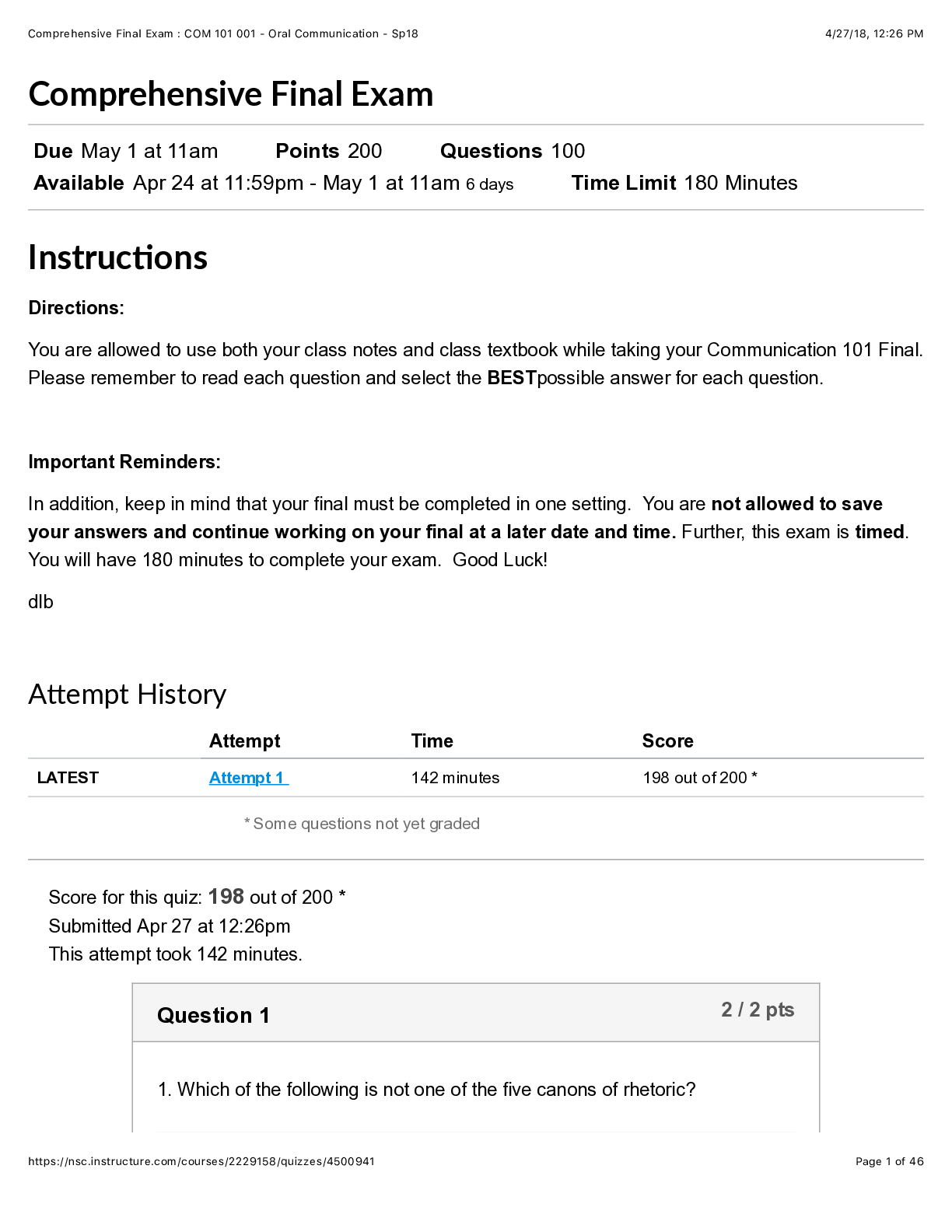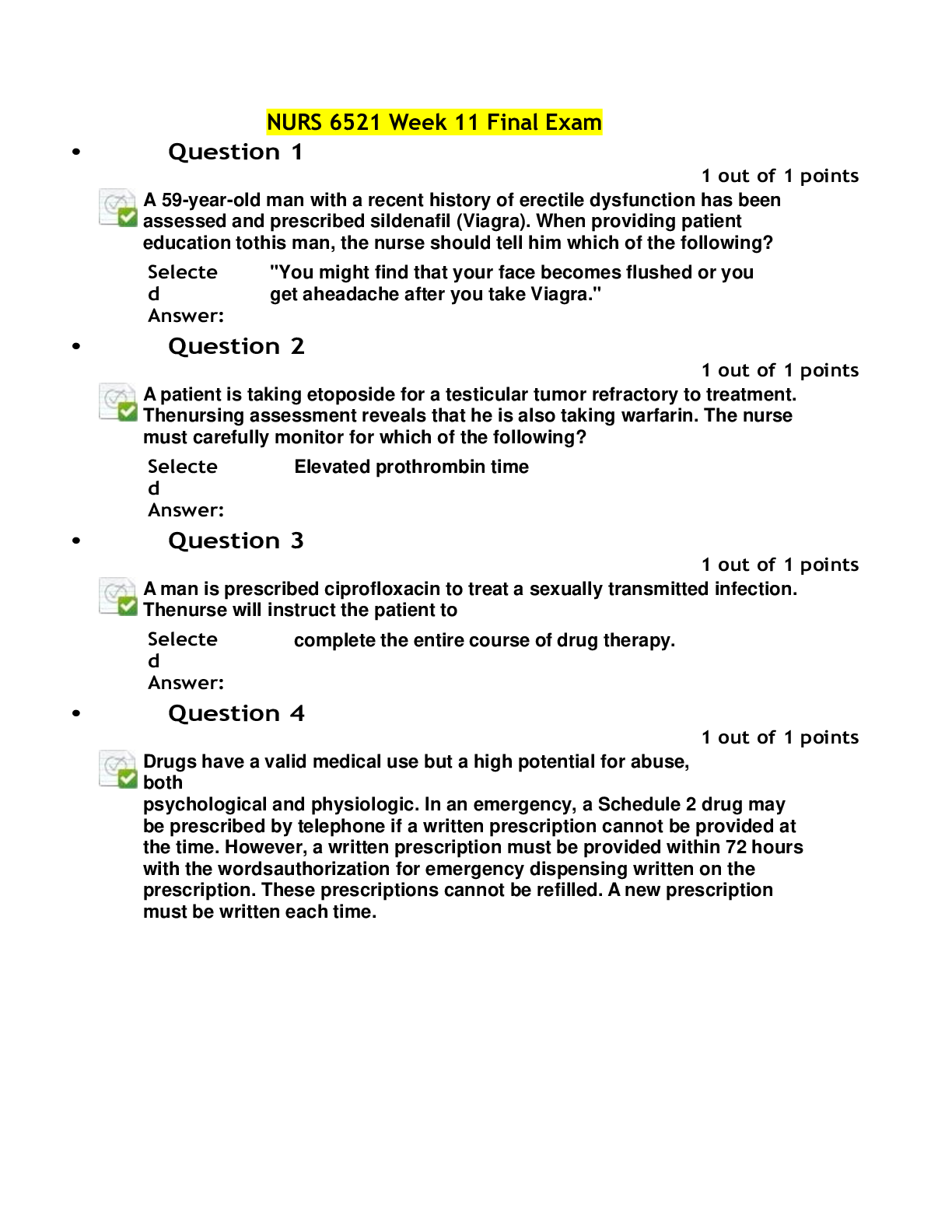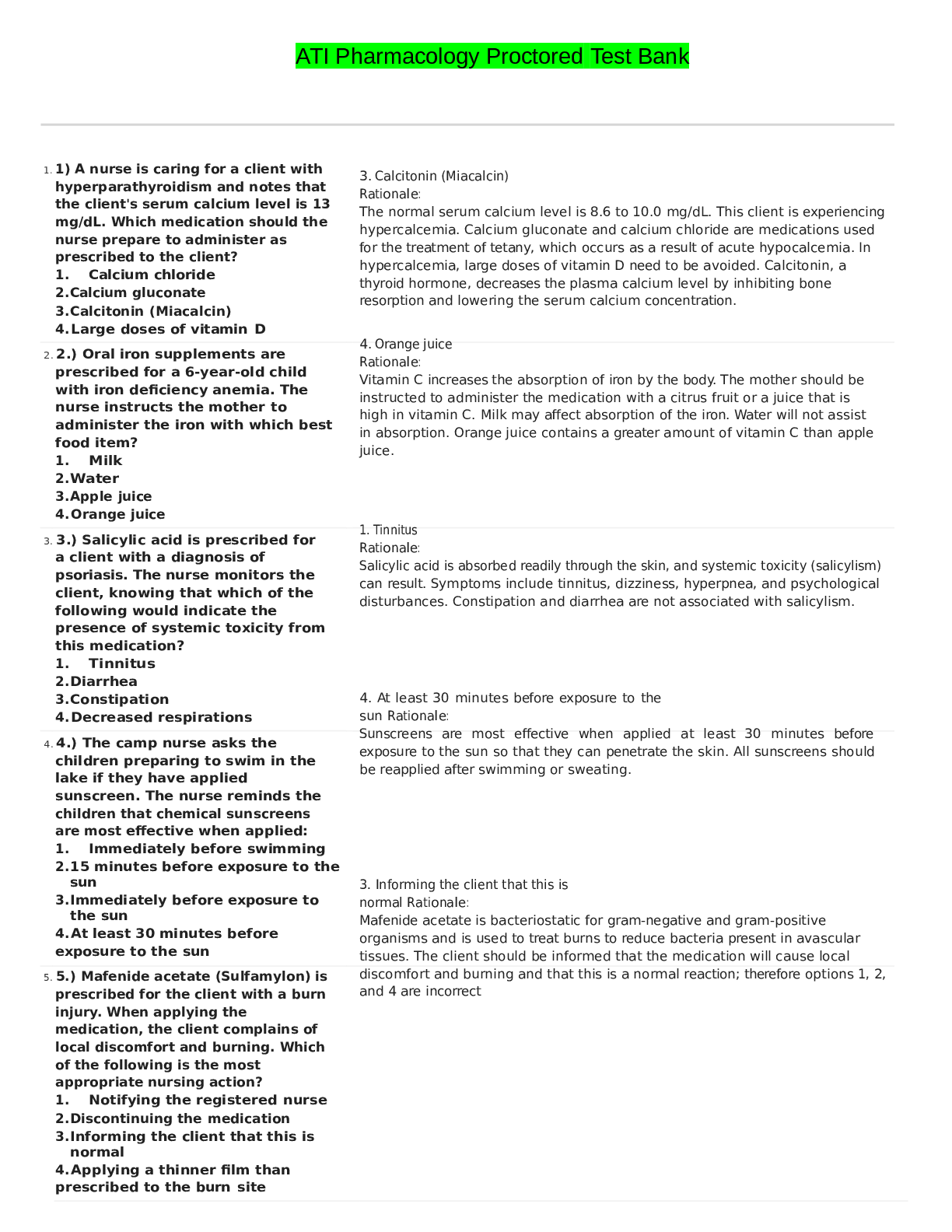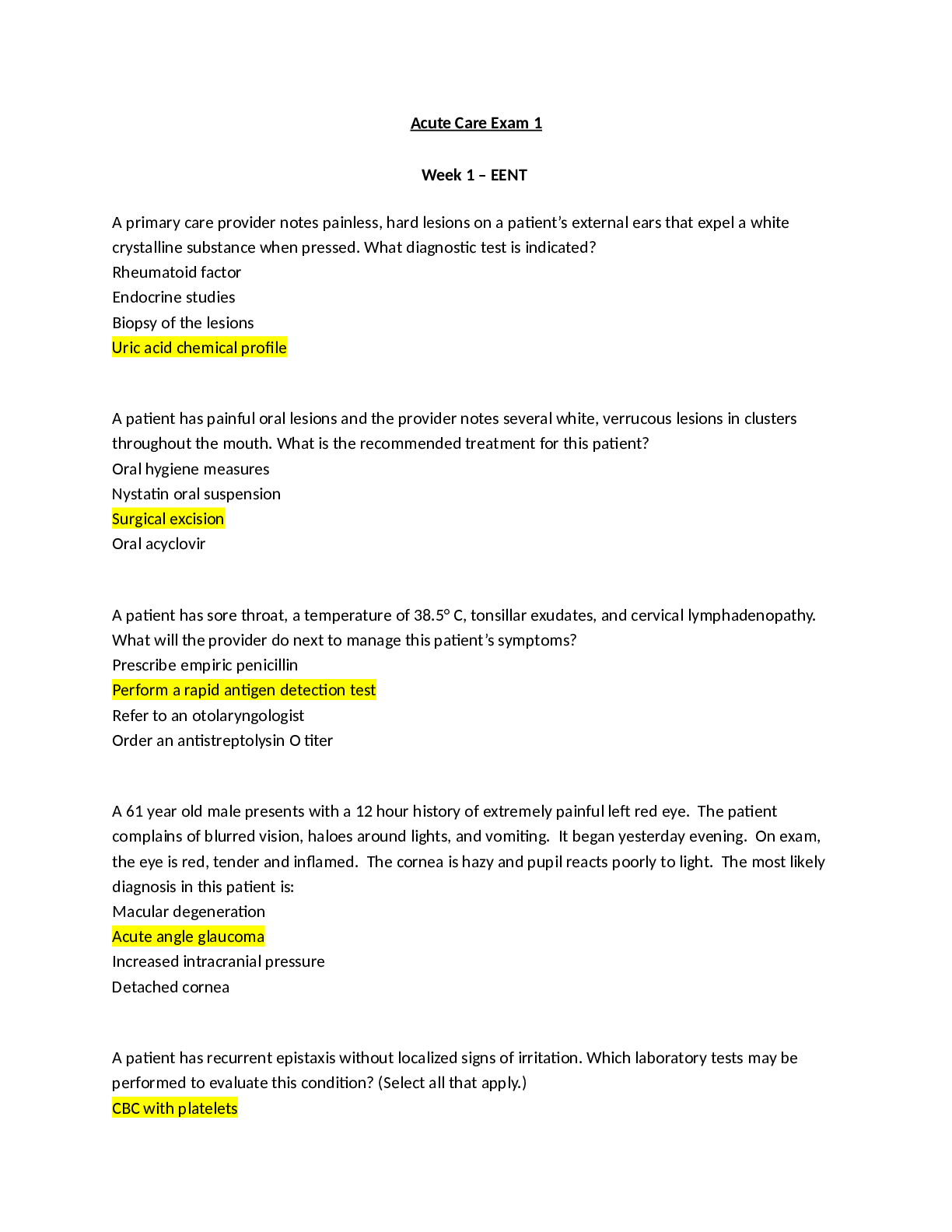Statistics > EXAM > QNT 275 Final Exam : Latest Complete Questions & Answers (all correct) - University of Phoenix. (All)
QNT 275 Final Exam : Latest Complete Questions & Answers (all correct) - University of Phoenix.
Document Content and Description Below
QNT 275 Final Exam 1. If you divide the number of elements in a sample with a specific characteristic by the total number of elements in the sample, the dividend is the: • sample distribution �... � sample mean • sampling distribution • sample proportion 2. The mean of a discrete random variable is its: • box-and-whisker measure • upper hinge • expected value • second quartile 3. Two paired or matched samples would imply that: • data are collected on two variables from the elements of two independent samples • data are collected on one variable from the elements of two independent samples • two data values are collected from the same source (elements) for two independent samples • two data values are collected from the same source (elements) for two dependent samples 4. In a survey regarding job satisfaction, 574 in a sample of 934 female job-holders stated that they are satisfied with their jobs, while 500 in a sample of 755 male job-holders stated that they are satisfied with their jobs. The null hypothesis is that the proportions of all female and male job-holders who are satisfied with their jobs are the same. The alternative hypothesis is that the proportion of female job-holders who are satisfied with their jobs is lower than the proportion of male job-holders stated who are satisfied with their jobs. The significance level is 2.5%. What is the critical value of z for the hypothesis test? • -1.96 • -2.33 • -2.17 • -2.05 5. The graph of a cumulative frequency distribution is a(n): • frequency histogram • line graph • ogive • stem-and-leaf display 6. The regression model y = A + Bx + e is: • a nonlinear model • a deterministic model • a probabilistic model • an exact relationship 7. A qualitative variable is the only type of variable that: • cannot be graphed • cannot be measured numerically • can assume numerical values • can assume an uncountable set of values 8. For a one-tailed test, the p-value is: • the area under the curve between the mean and the observed value of the sample statistic • twice the area under the curve between the mean and the observed value of the sample statistic • twice the area under the curve to the same side of the value of the sample statistic as is specified in the alternative hypothesis • the area under the curve to the same side of the value of the sample statistic as is specified in the alternative hypothesis 9. You toss a coin nine times and observe 3 heads and 6 tails. This event is a: • multiple outcome • compound event • multinomial sample point • simple event 10. For small degrees of freedom, the chi-square distribution is: • skewed to the right • skewed to the left • rectangular • symmetric 11. A researcher wants to test if the mean annual salary of all lawyers in a city is different than $110,000. The null hypothesis for this example will be that the population mean is: • less than to $110,000 • greater than to $110,000 • equal to $110,000 • not equal to $110,000 12. The mean of a discrete random variable is the mean of its: • frequency distribution • probability distribution • second and third quartiles • percentage distribution 13. The model y = A + Bx is a: • nonlinear model • deterministic model • probabilistic model • stochastic model 14. A sample of 16 from a population produced a mean of 86.9 and a standard deviation of 14.3. A sample of 18 from another population produced a mean of 75.4 and a standard deviation of 15.9. Assume that the two populations are normally distributed and the standard deviations of the two populations are equal. The null hypothesis is that the two population means are equal, while the alternative hypothesis is that the mean of the first population is greater than the man of the second population. The significance level is 1%. What is the critical value of t for the hypothesis test? • 2.441 • 2.738 • 2.449 • 2.733 15. Which of the following pairs of events are mutually exclusive? • Female and yes • Female and no • No and yes • Female and male 16. In a hypothesis test, a Type I error occurs when: • a false null hypothesis is rejected • a true null hypothesis is not rejected • a true null hypothesis is rejected • a false null hypothesis is not rejected 17. A researcher wants to test if elementary school children spend less than 30 minutes per day on homework. The alternative hypothesis for this example will be that the population mean is: • less than or equal to 30 minutes • equal to 30 minutes • not equal to 30 minutes • less than 30 minutes 18. A linear regression: • gives a relationship between three variables that can be described by a line • contains only two variables • gives a relationship between two variables that cannot be described by a line • gives a relationship between two variables that can be described by a line 19. For a goodness-of-fit test, the frequencies obtained from the performance of an experiment are the: • expected frequencies • subjective frequencies • objective frequencies • observed frequencies 20. Which of the following assumptions is not required to use ANOVA? • The populations from which the samples are drawn have the same variance. • All samples are of the same size. • The populations from which the samples are drawn are (approximately) normally distributed. • The samples drawn from different populations are random and independent. 21. A continuous random variable x has a right-skewed distribution with a mean of 80 and a standard deviation of 12. The sampling distribution of the sample mean for a sample of 50 elements taken from this population is: • not normal •skewed to the left • approximately normal • skewed to the right 22. To make tests of hypotheses about more than two population means, we use the: • analysis of variance distribution • t distribution • chi-square distribution • normal distribution 23. An error that occurs because of chance is called: • nonsampling error • sampling error • probability error • mean error 24. The p-value is the: • largest significance level at which the alternative hypothesis can be rejected • largest significance level at which the null hypothesis can be rejected • smallest significance level at which the null hypothesis can be rejected • smallest significance level at which the null hypothesis can be rejected 25. In a hypothesis test, a Type II error occurs when: • a false null hypothesis is not rejected • a true null hypothesis is rejected • a false null hypothesis is rejected • a true null hypothesis is not rejected 26. We can use the analysis of variance procedure to test hypotheses about: • two or more population proportions • the proportion of one population • the mean of one population • two or more population means 27. You randomly select two households and observe whether or not they own a telephone answering machine. Which of the following is a simple event? • At least one of them owns a telephone answering machine. • At most one of them owns a telephone answering machine. • Exactly one of them owns a telephone answering machine. • Neither of the two owns a telephone answering machine. 28. A quantitative variable is the only type of variable that can: • be used to prepare tables • assume numeric values for which arithmetic operations make sense • be graphed • have no intermediate values 29. The alternative hypothesis is a claim about a: • statistic, where the claim is assumed to be false until it is declared true • parameter, where the claim is assumed to be true until it is declared false • statistic, where the claim is assumed to be true if the null hypothesis is declared false • parameter, where the claim is assumed to be true if the null hypothesis is declared false 30. In a one-way ANOVA, we analyze only one: • population • sample • mean • variable [Show More]
Last updated: 1 year ago
Preview 1 out of 9 pages
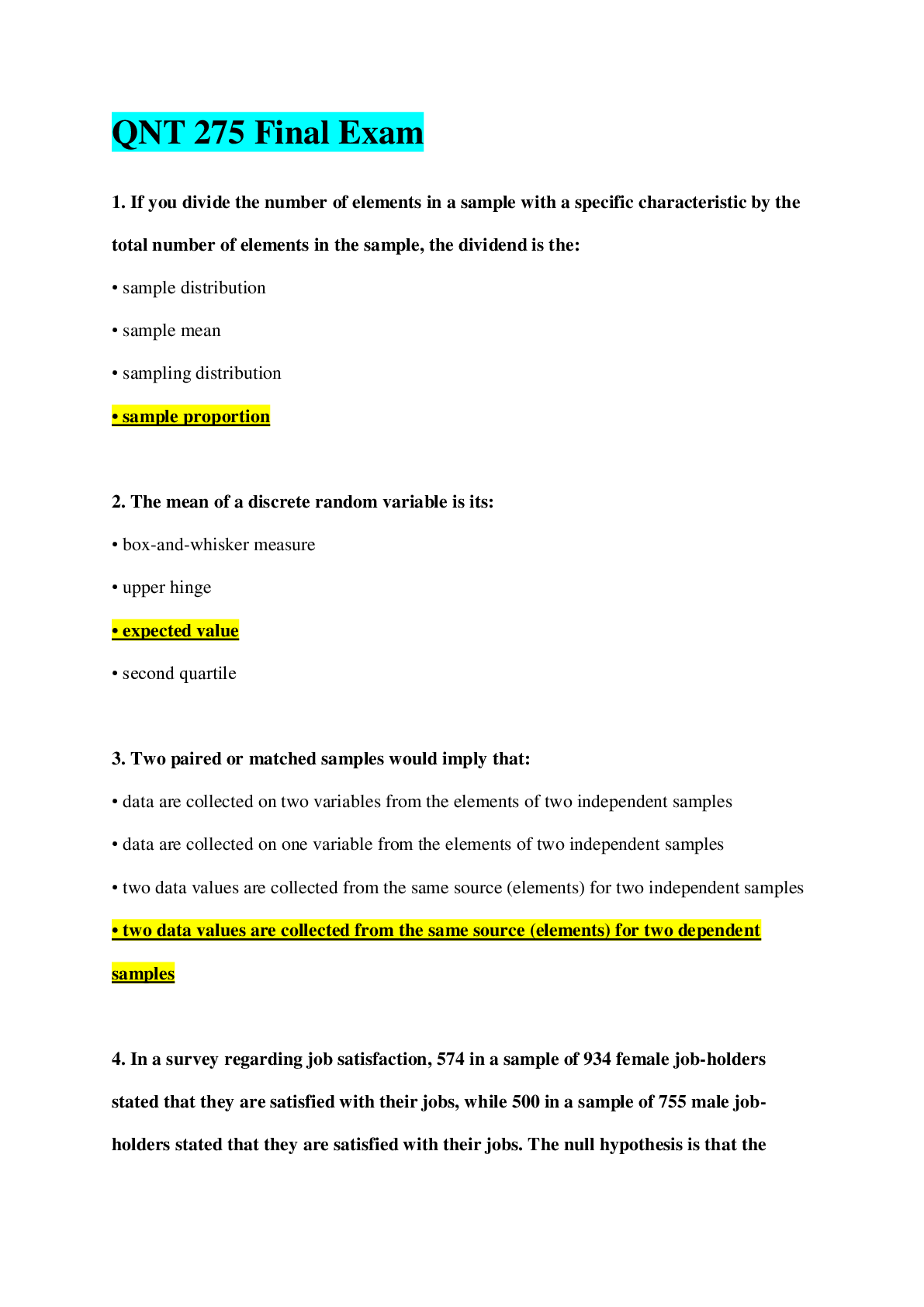
Reviews( 0 )
Document information
Connected school, study & course
About the document
Uploaded On
Mar 20, 2020
Number of pages
9
Written in
Additional information
This document has been written for:
Uploaded
Mar 20, 2020
Downloads
0
Views
39

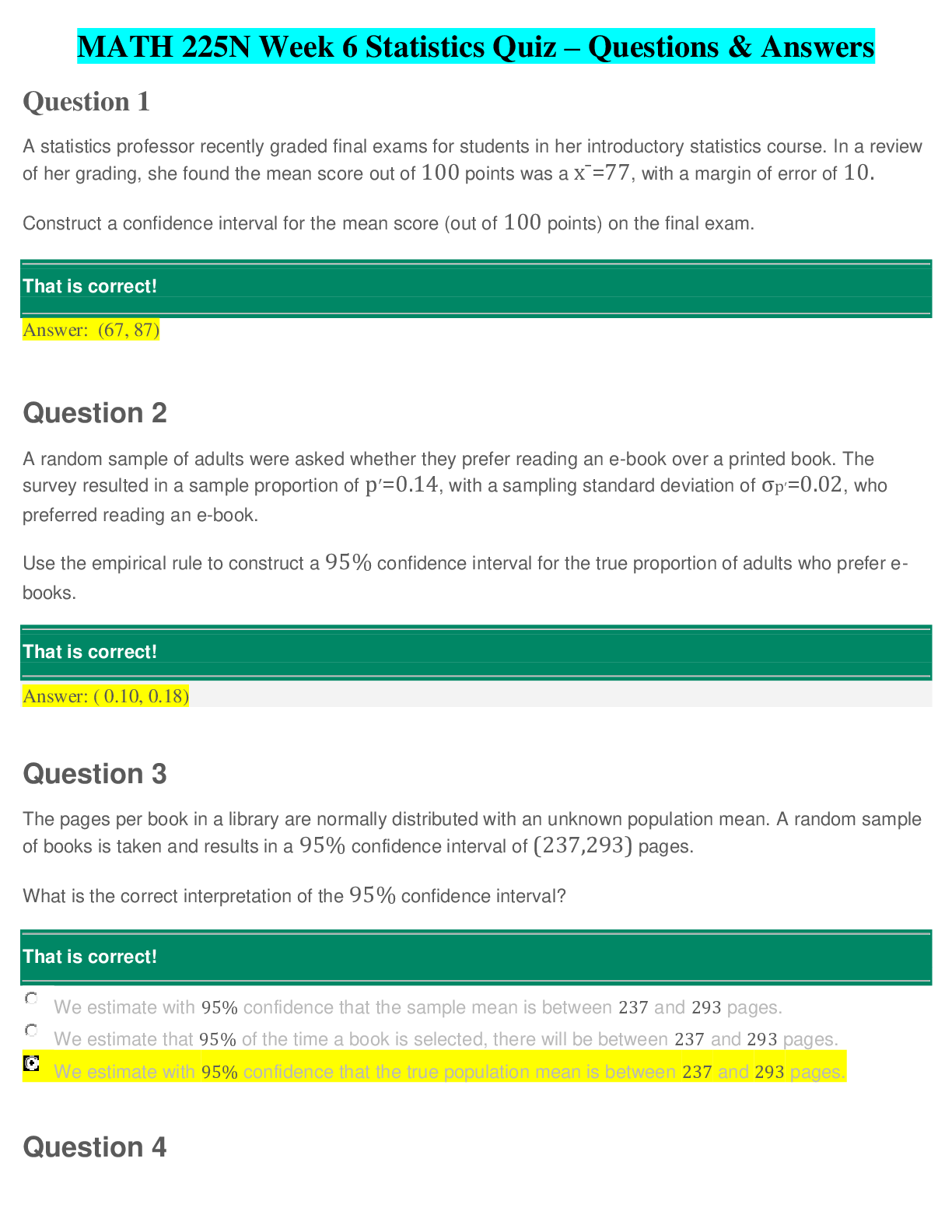
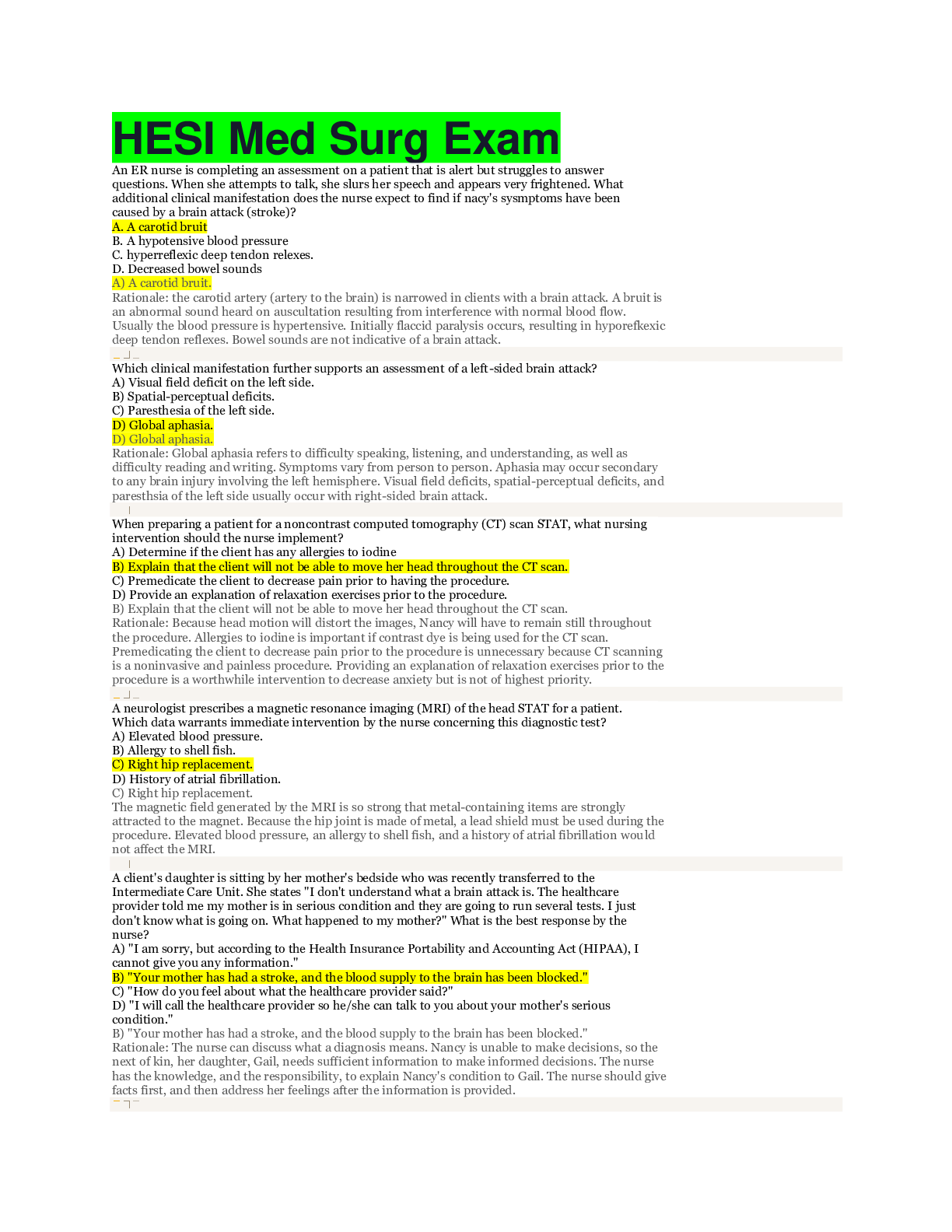
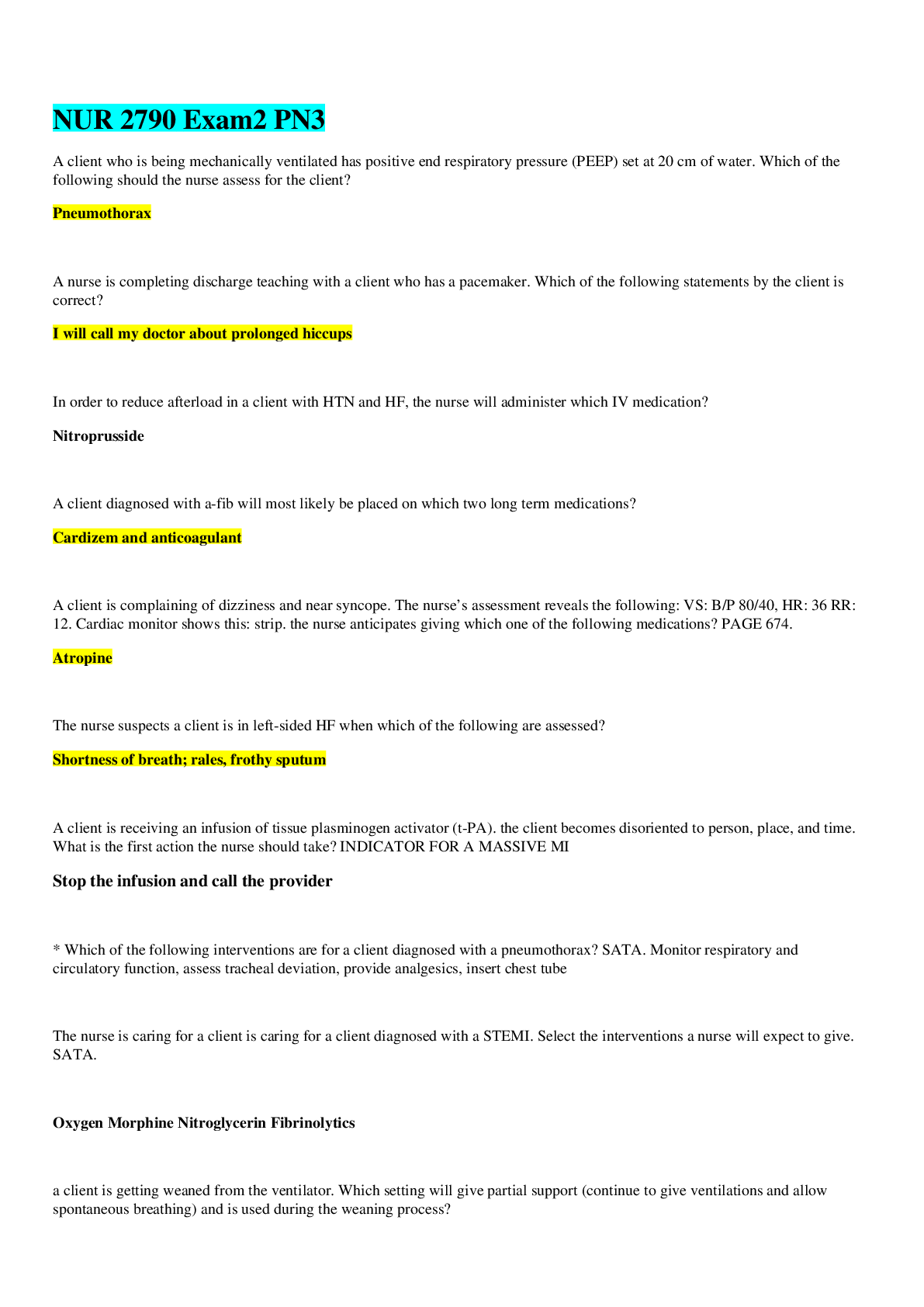
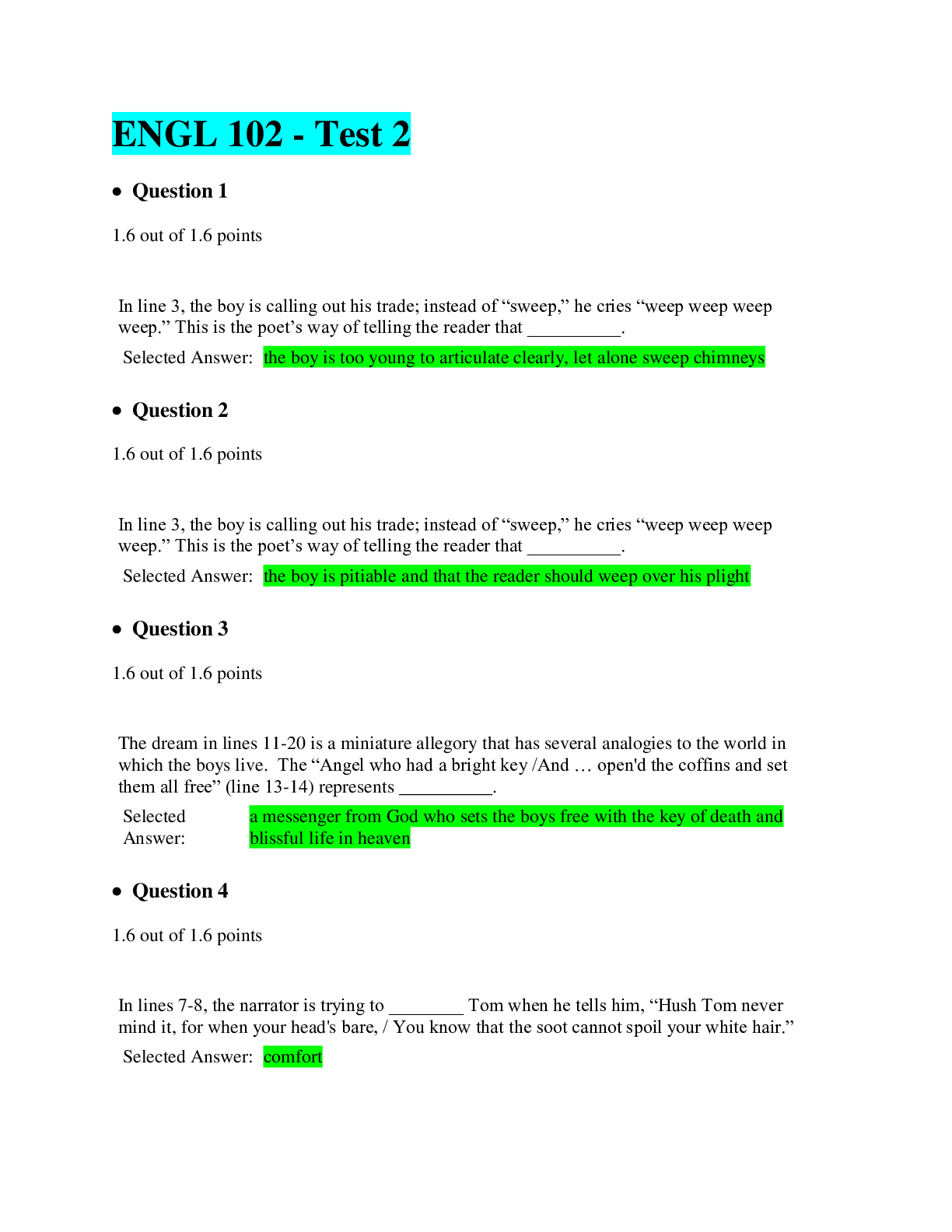
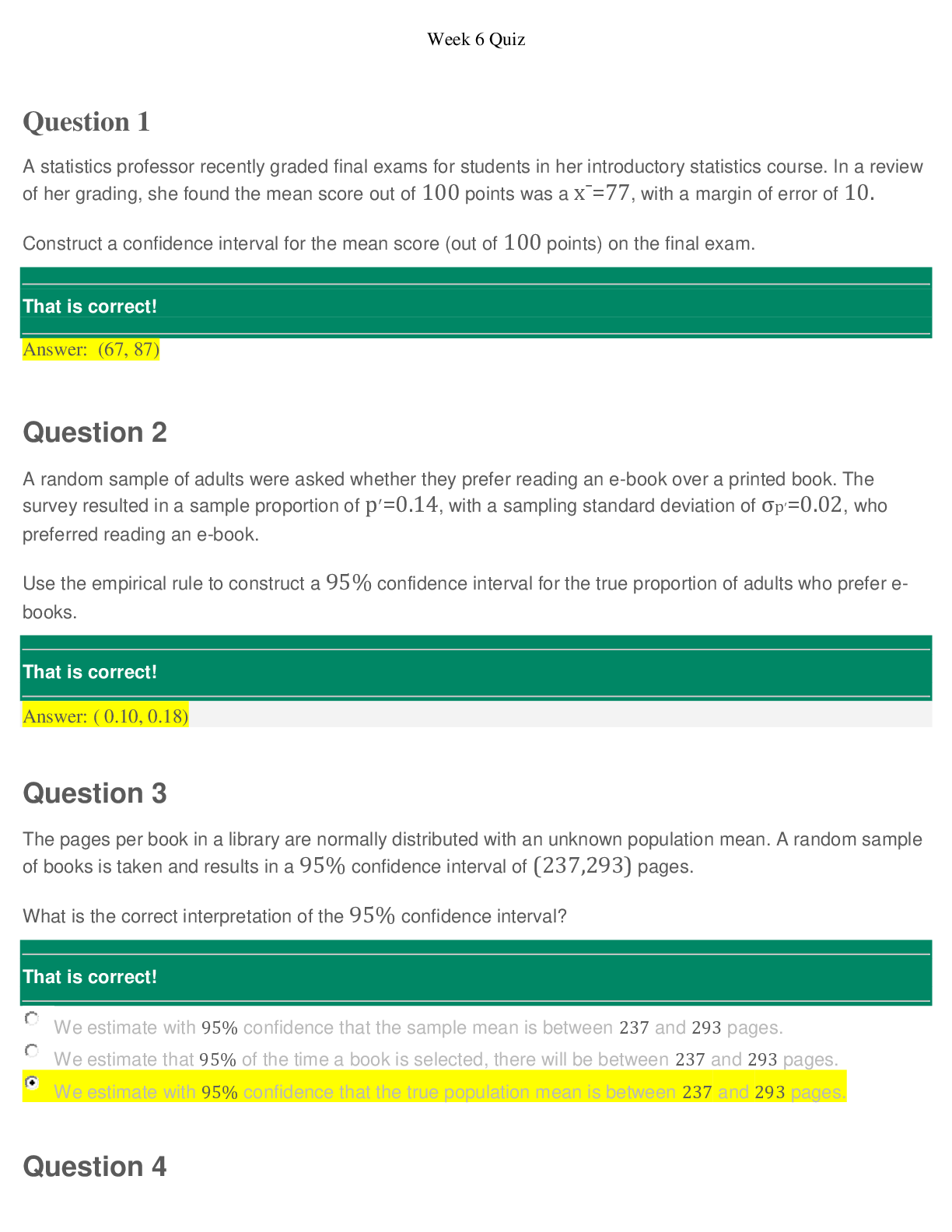

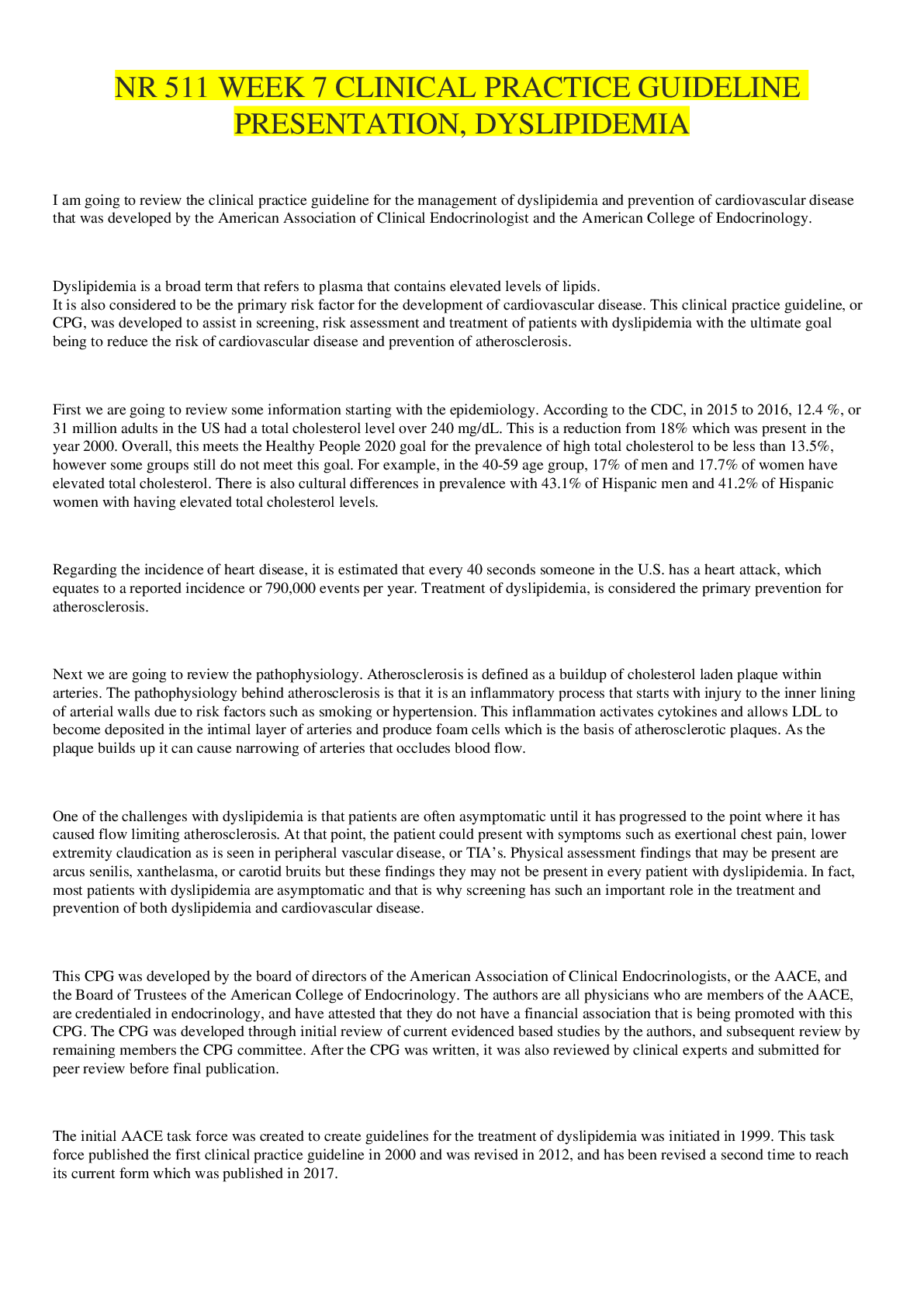
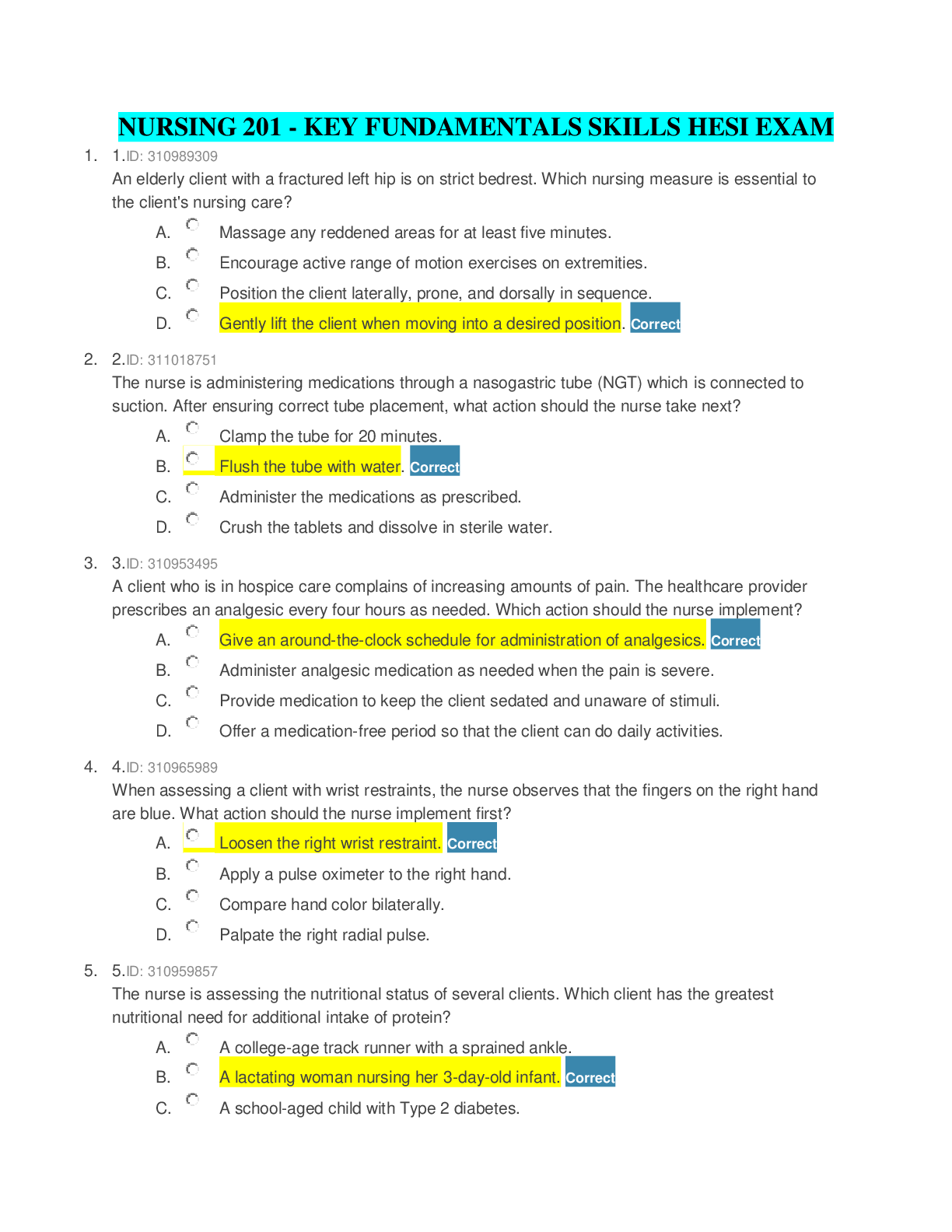
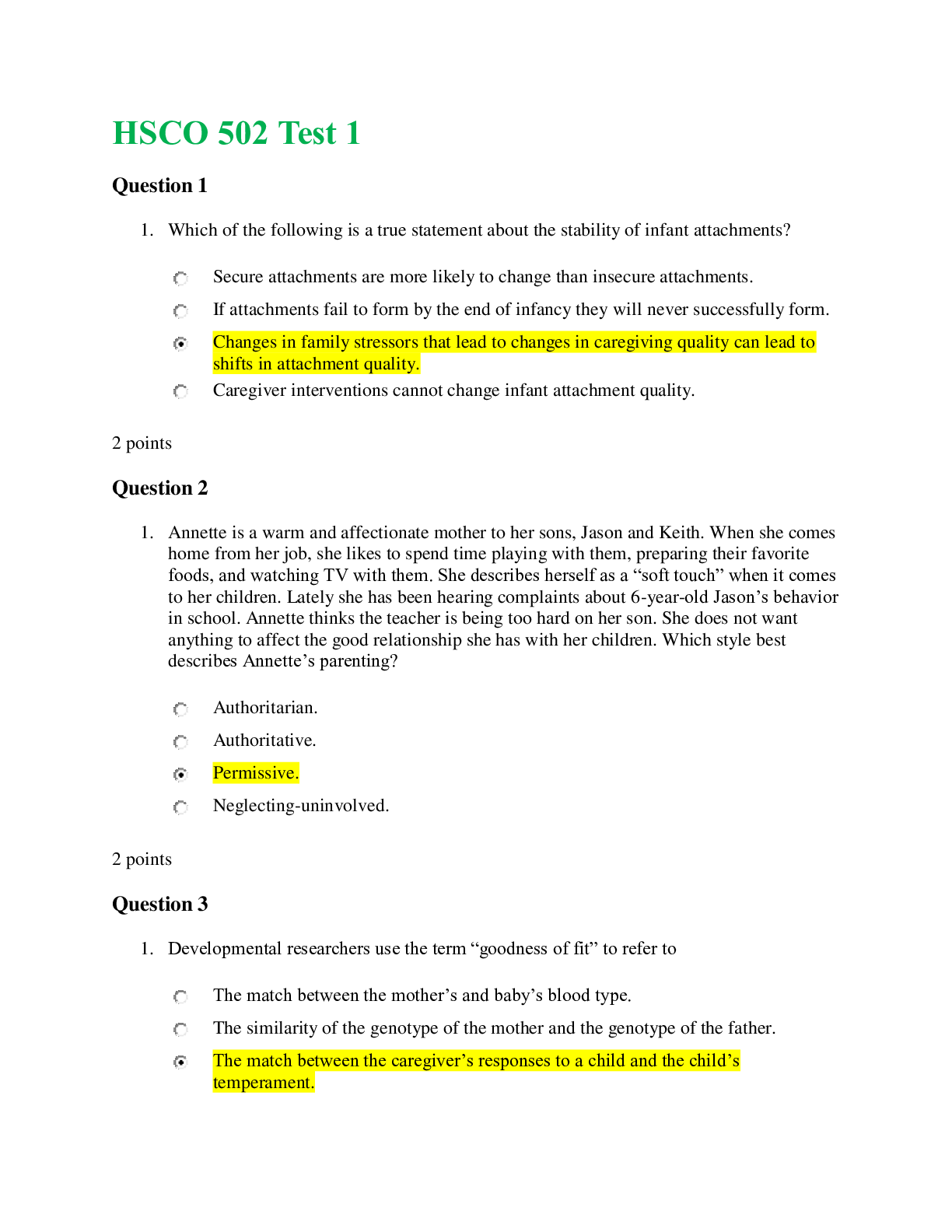

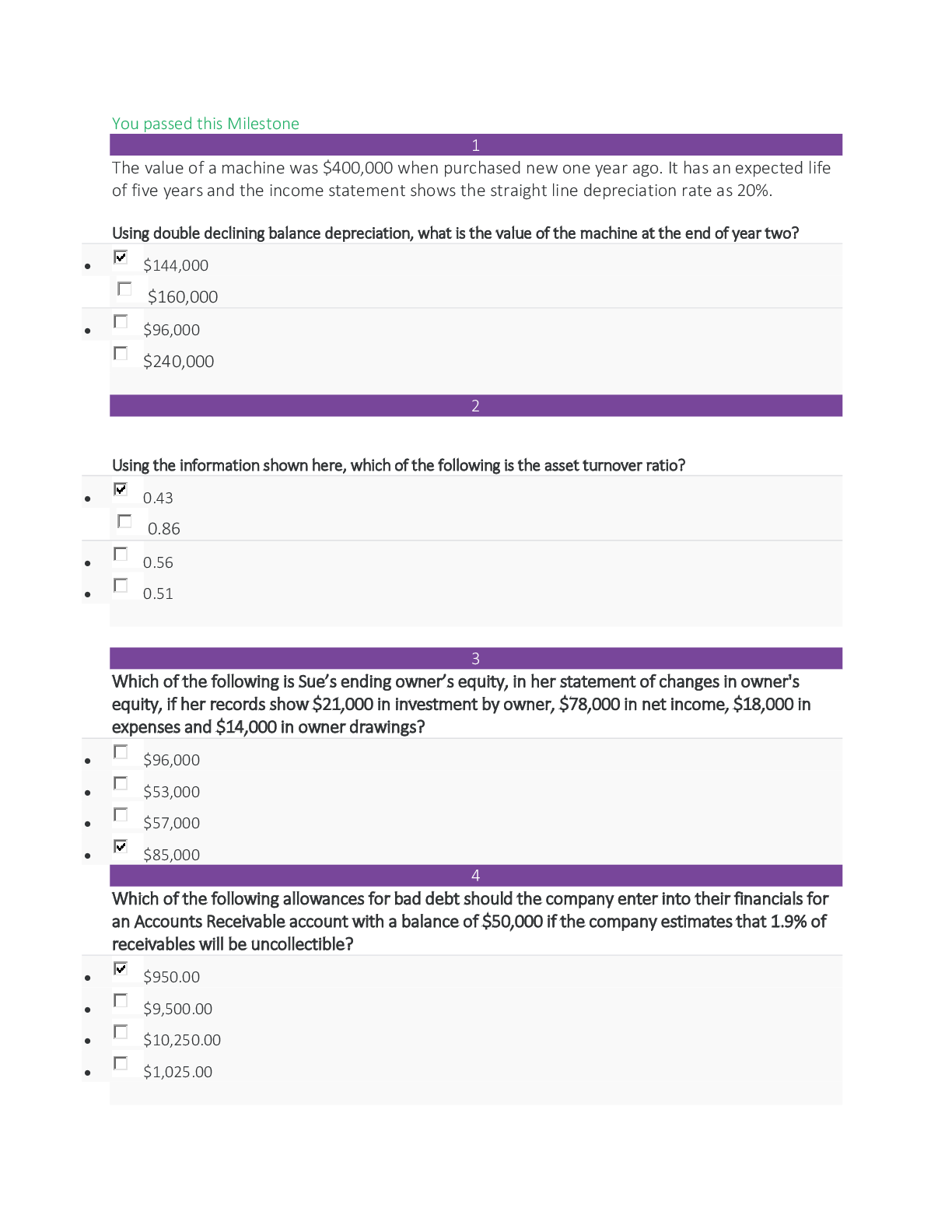
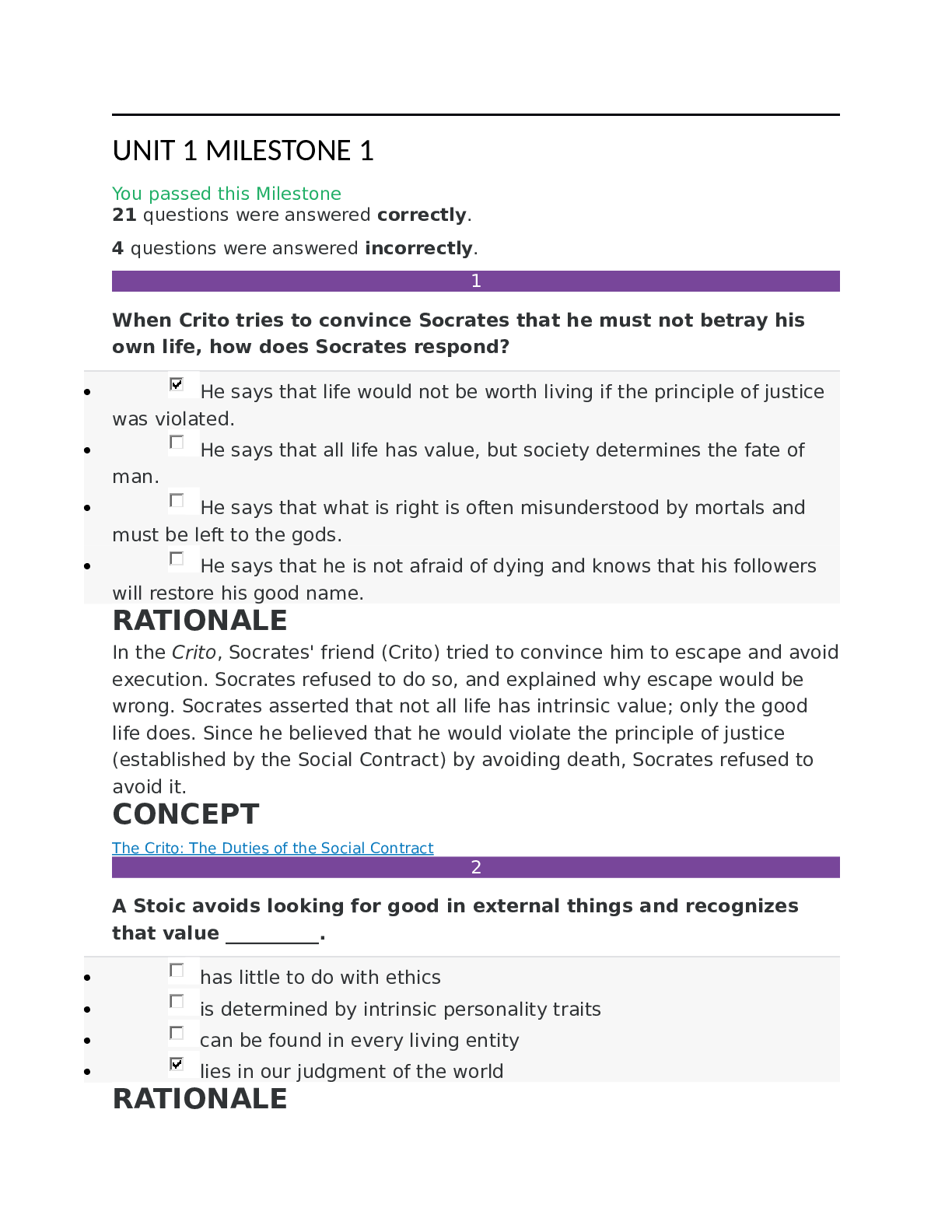
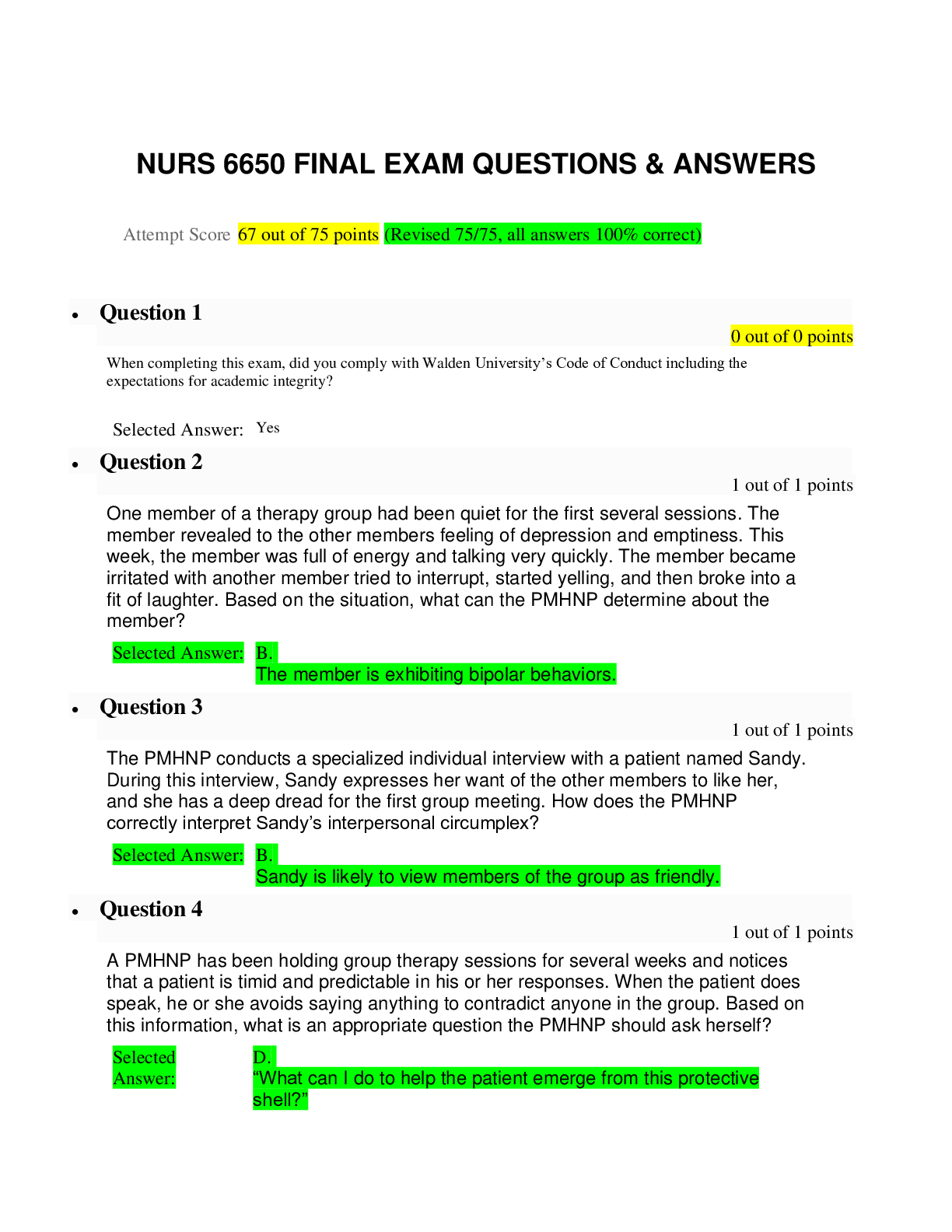
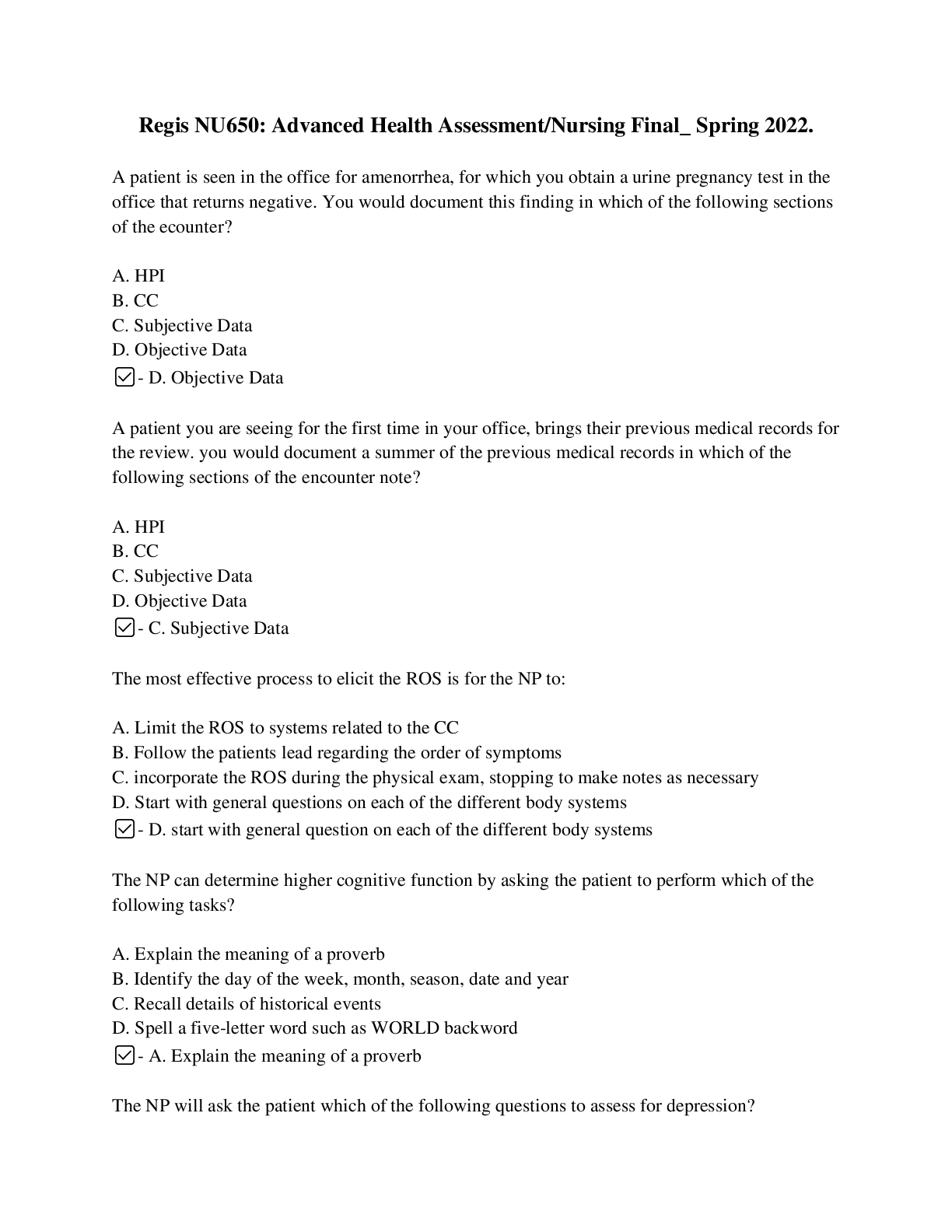
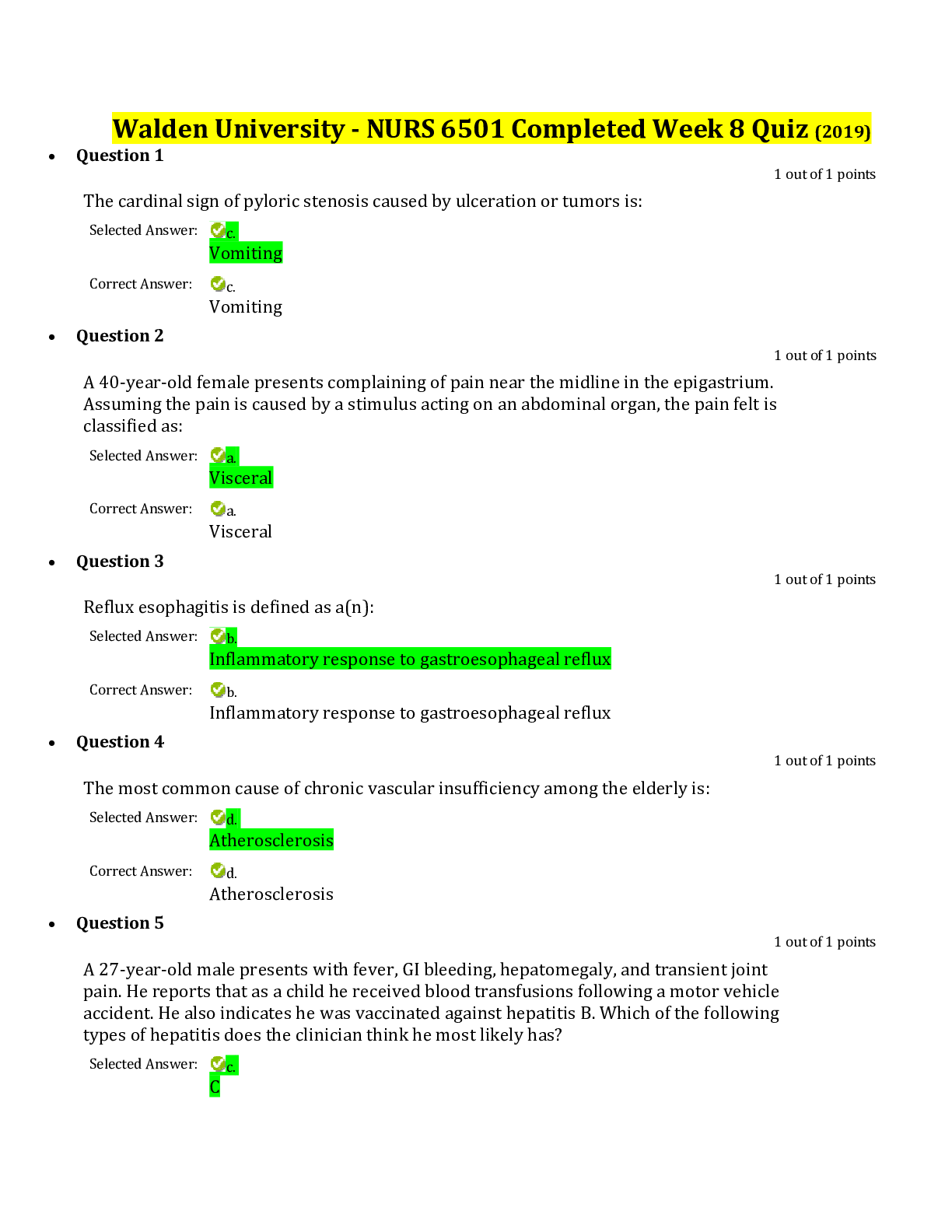
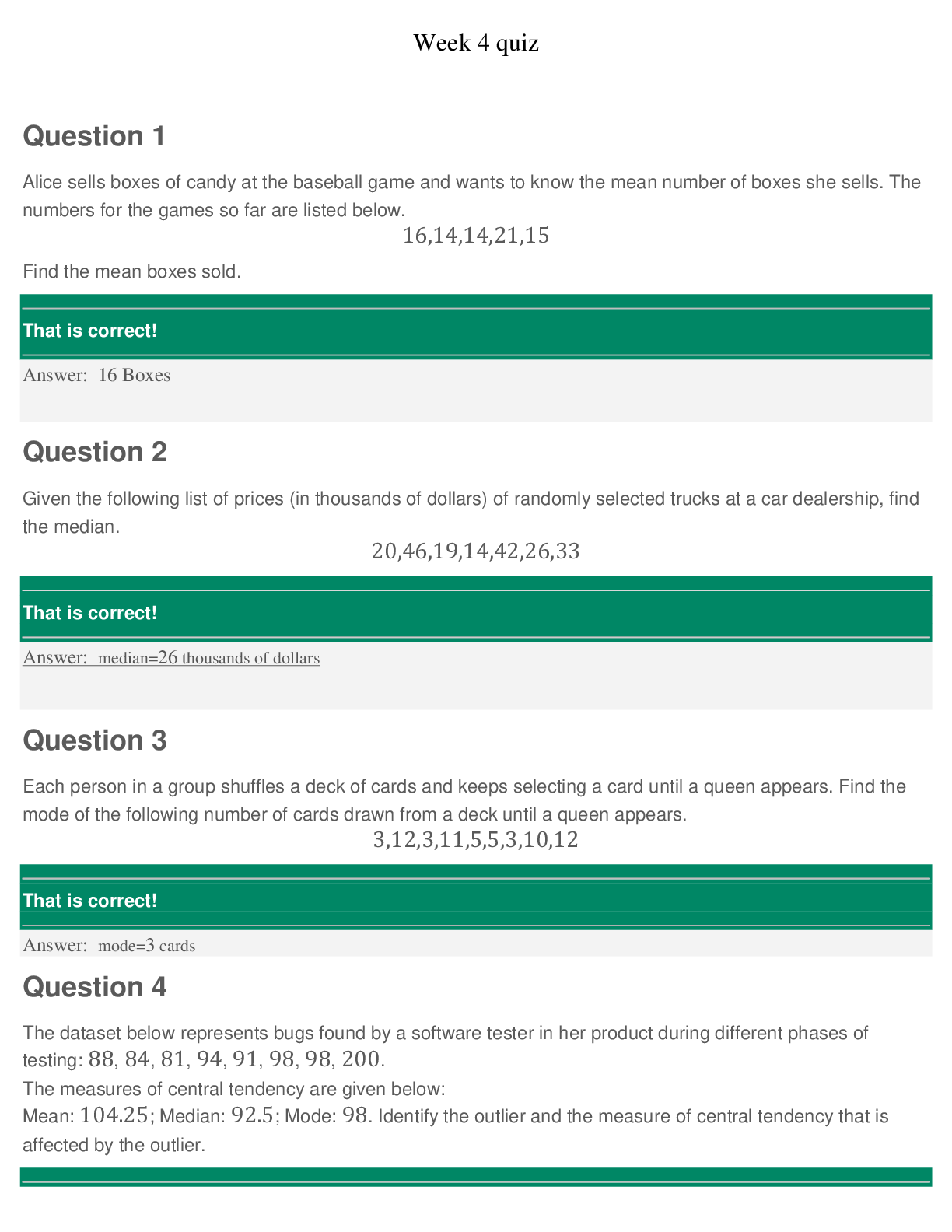
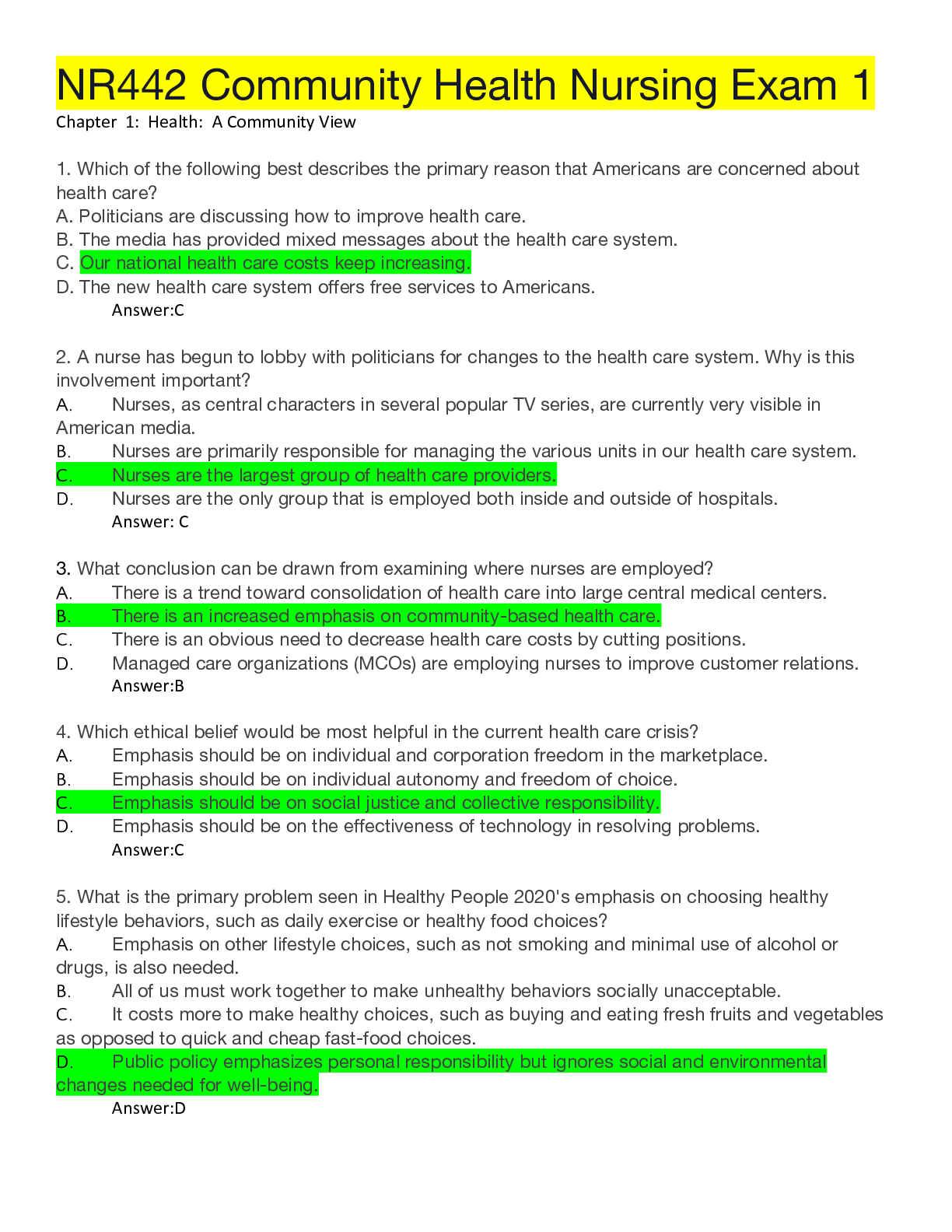

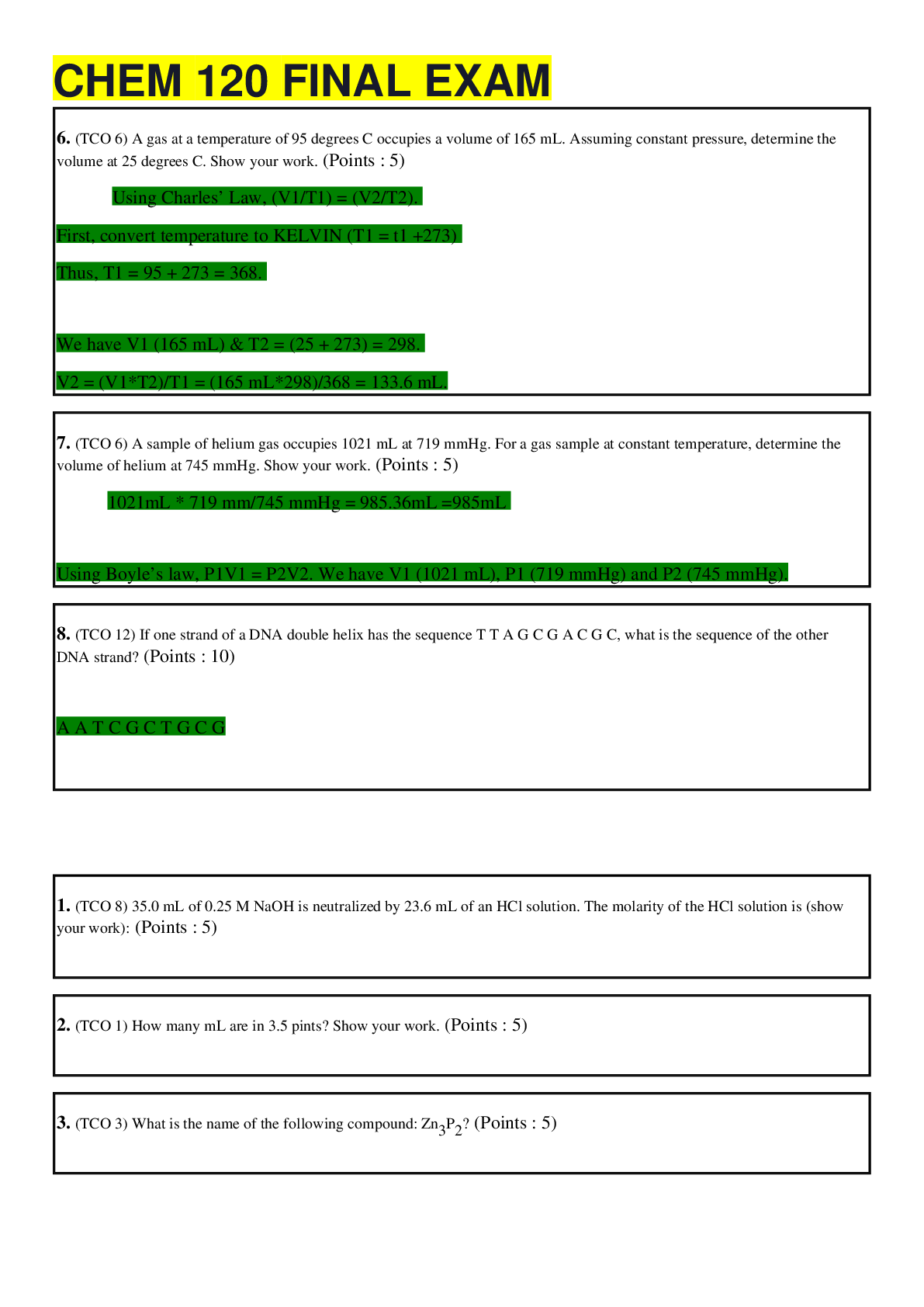
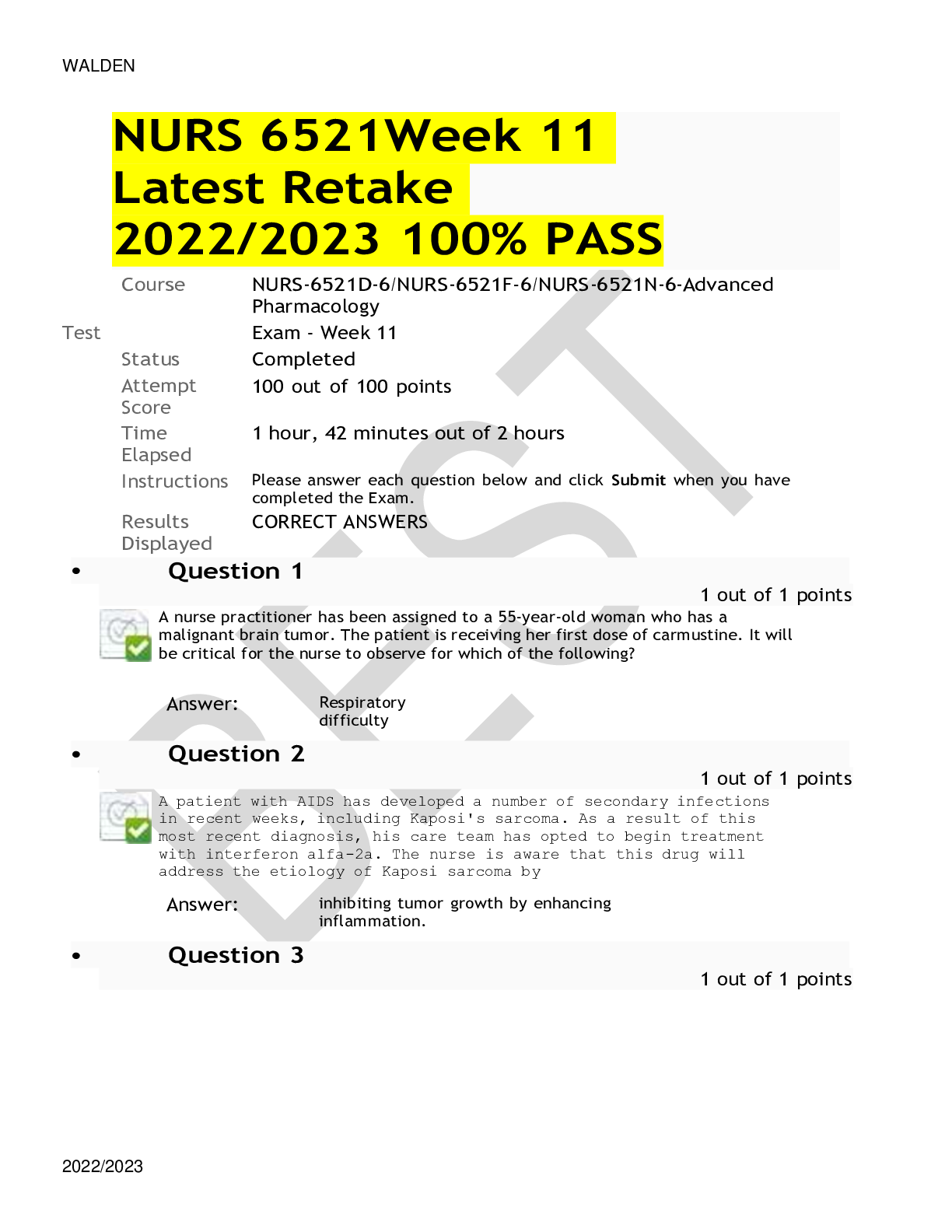
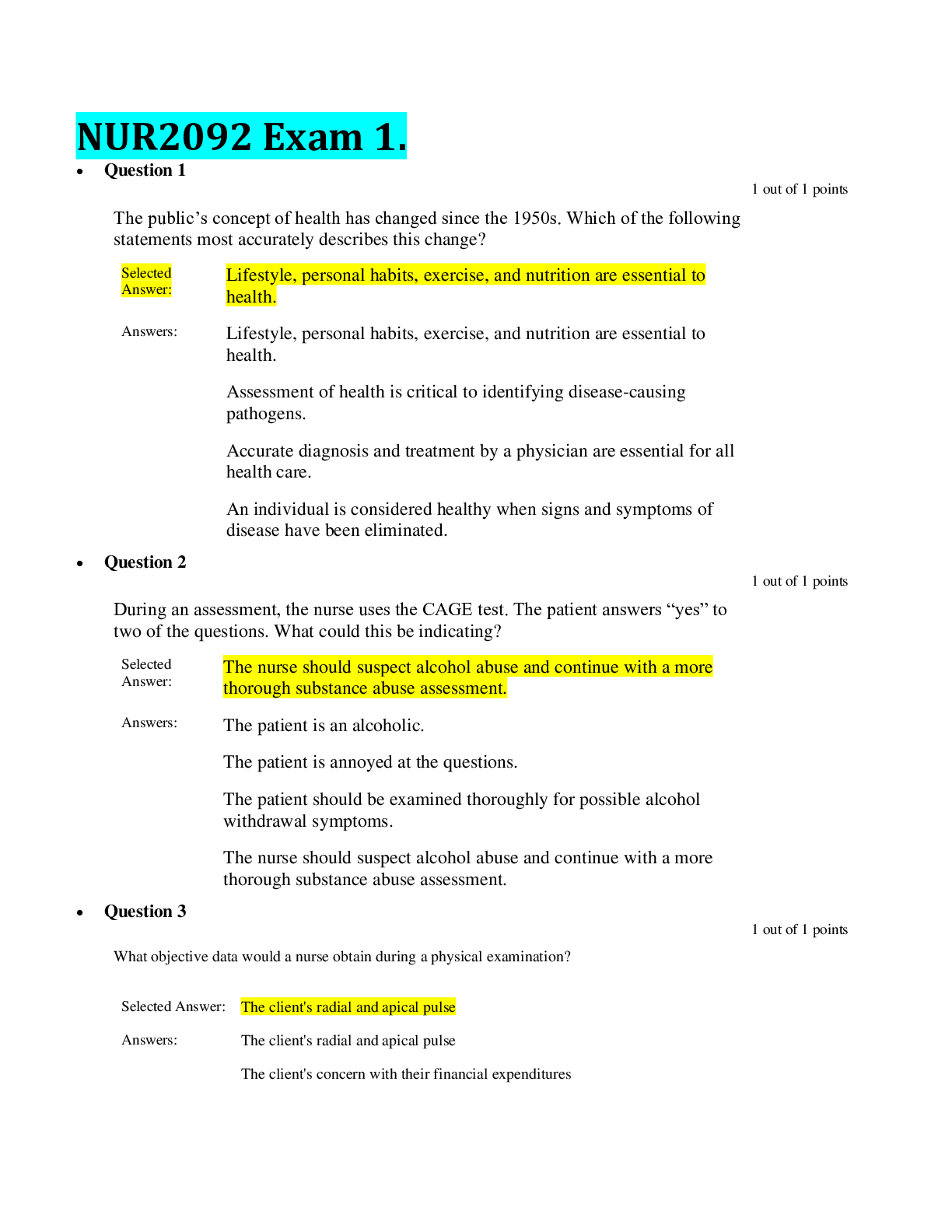
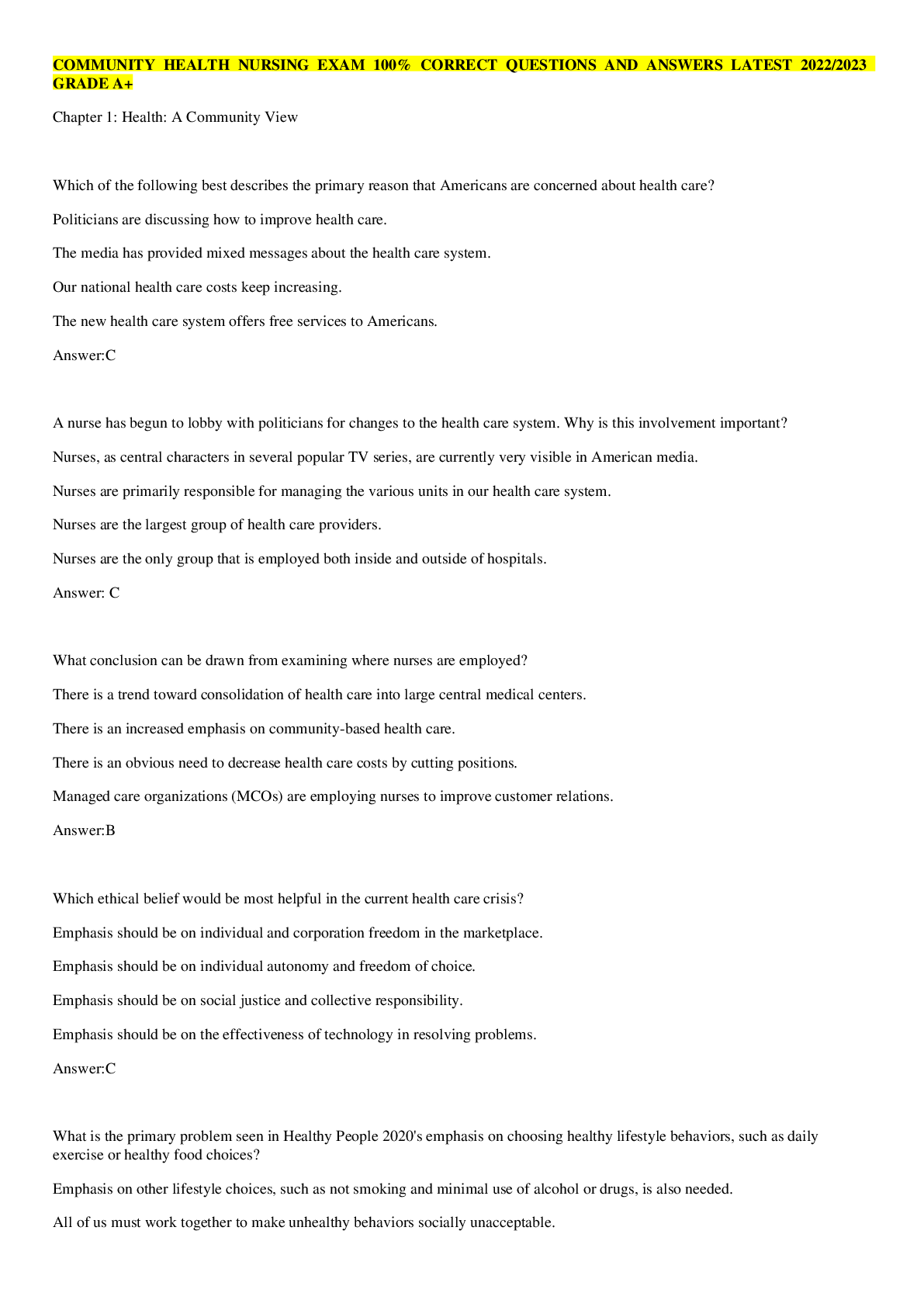
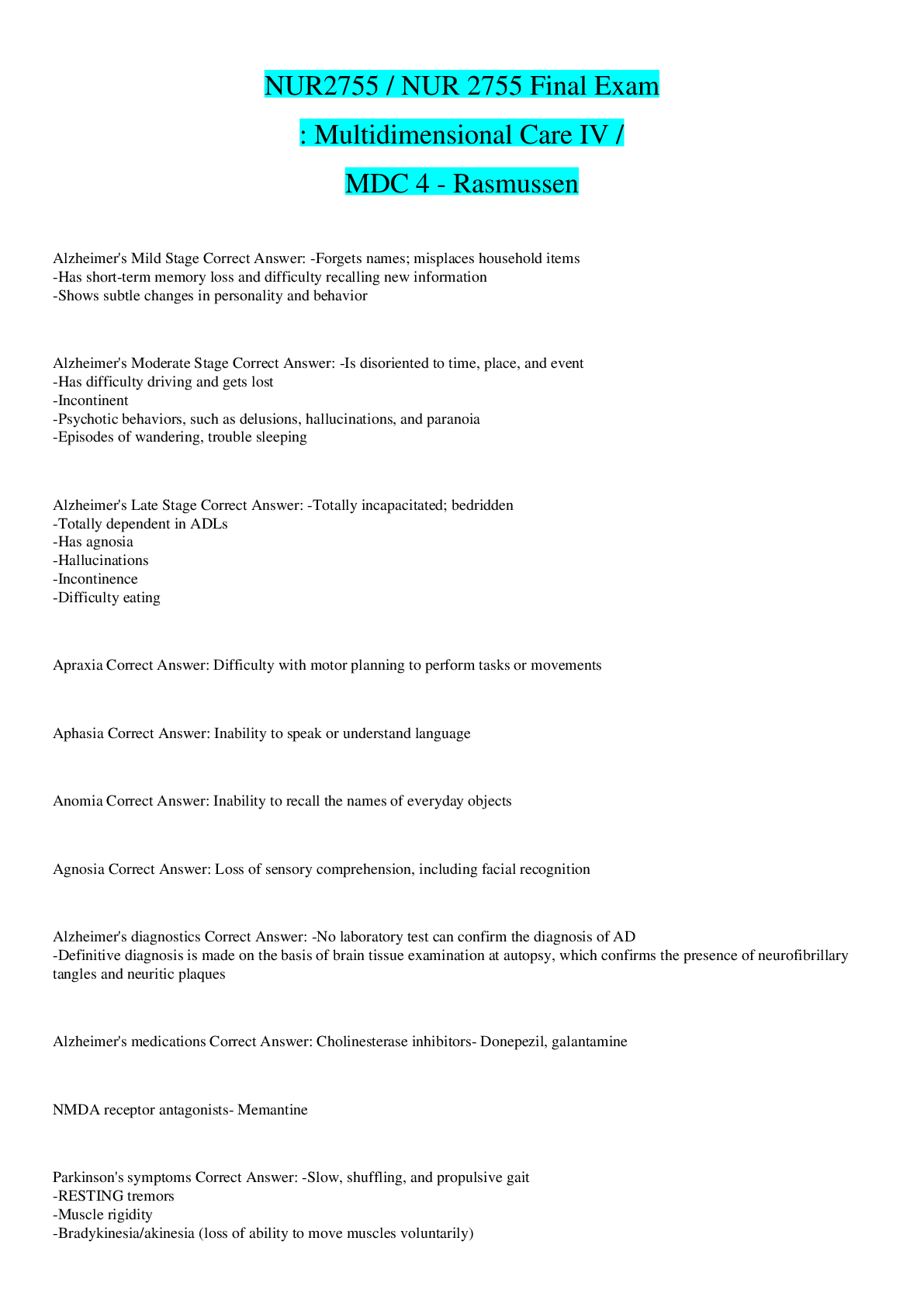
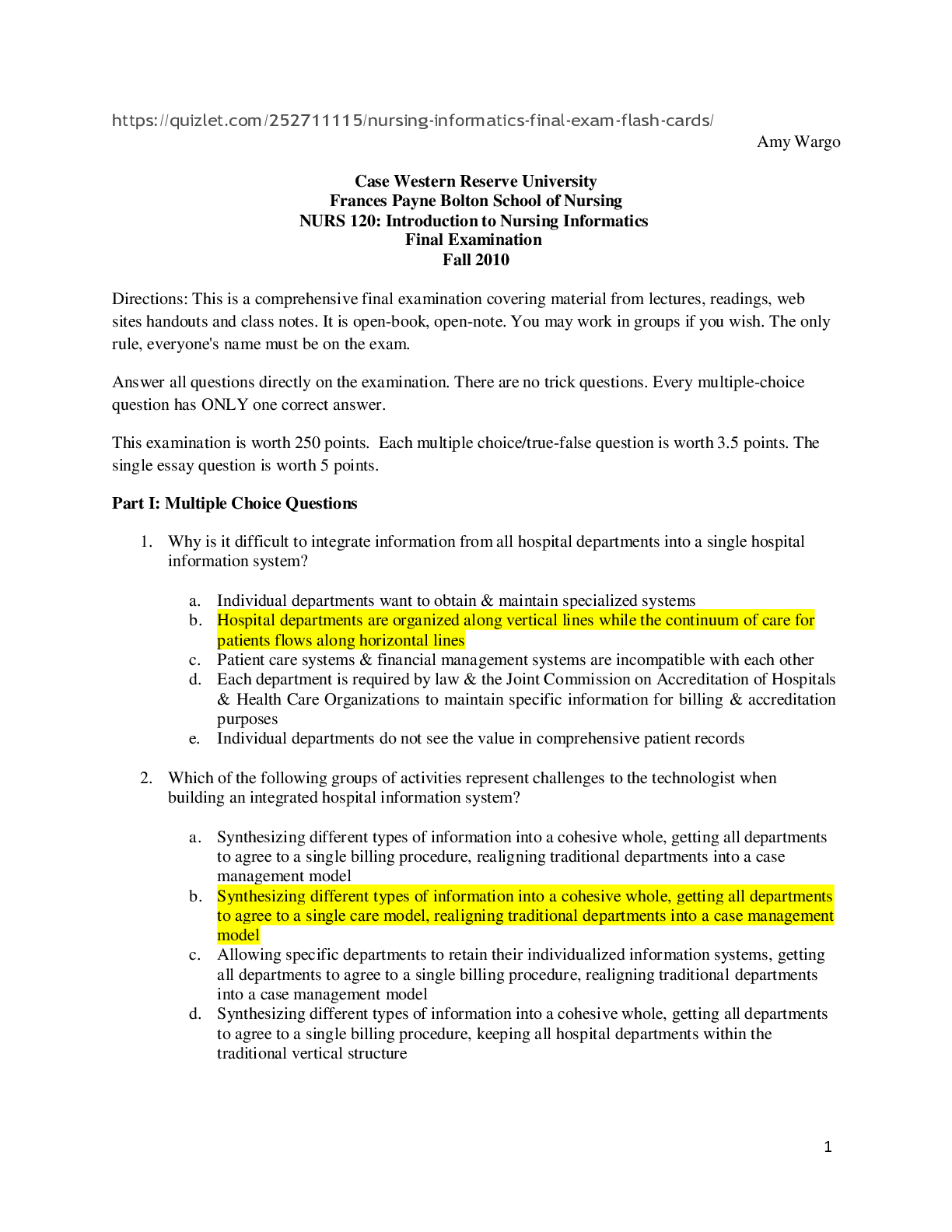

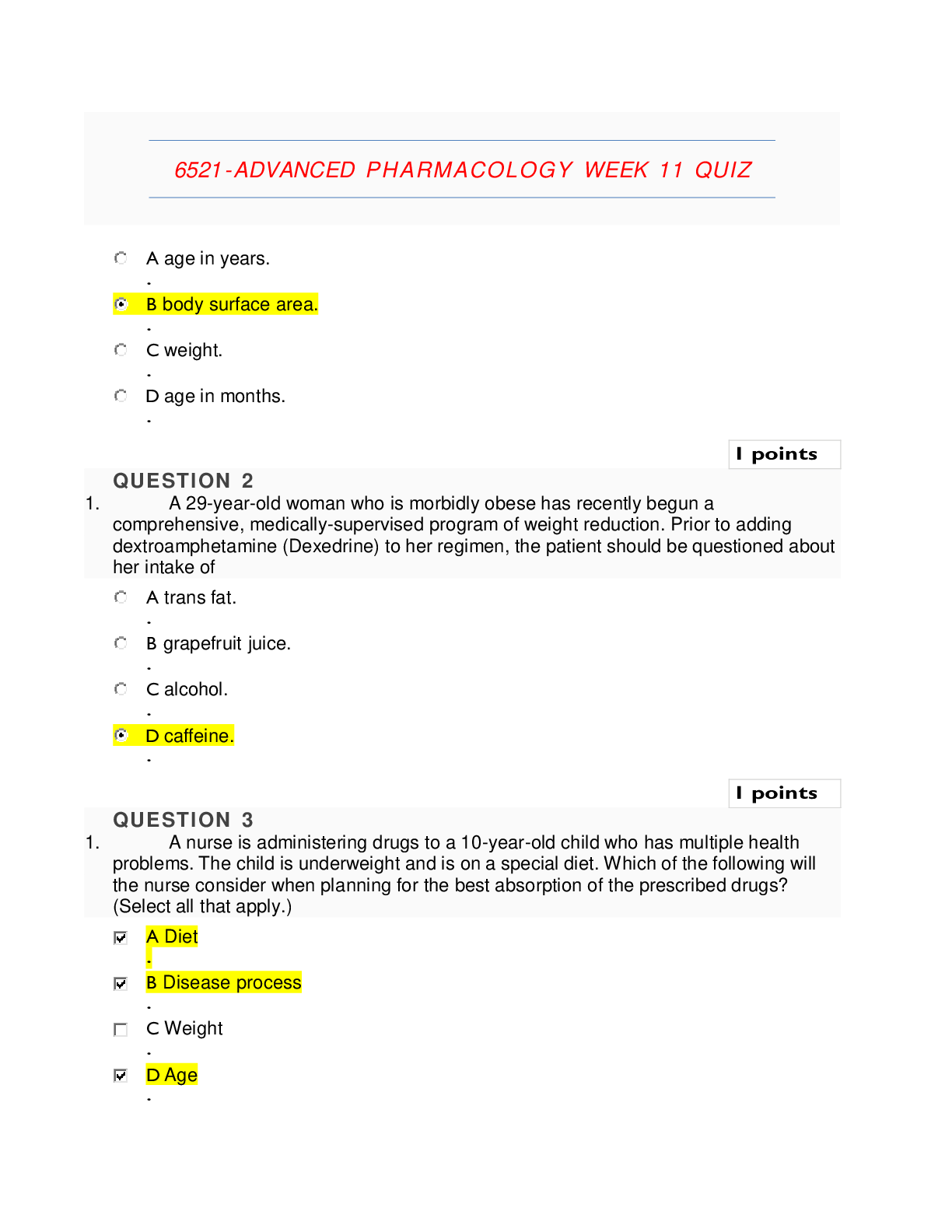
.png)

